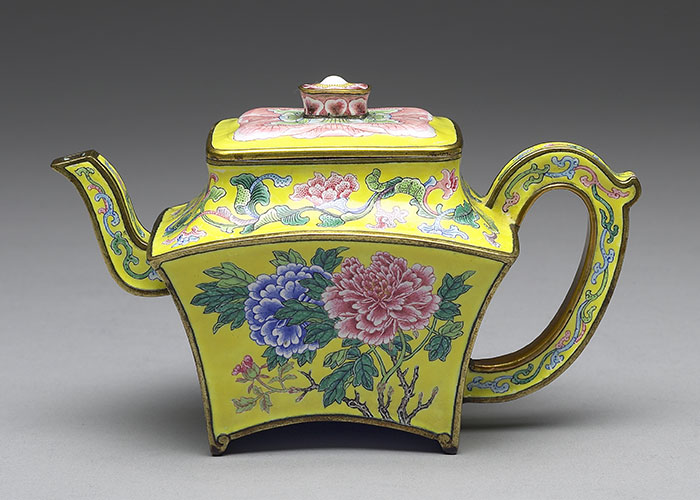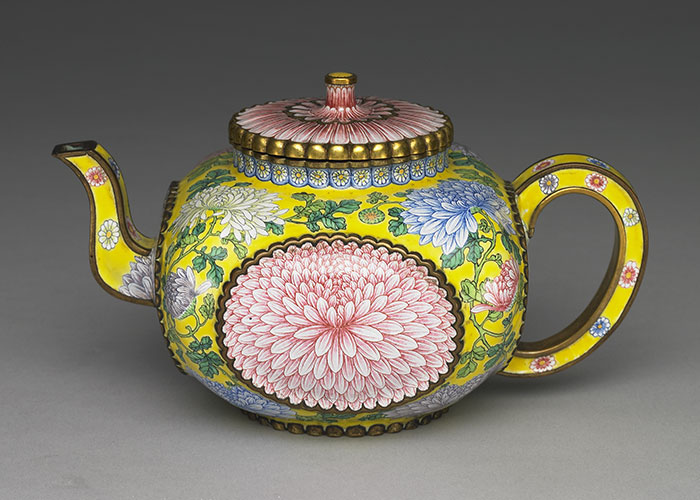During the Kangxi reign, the imperial workshop devloped the craft of painted enemals, which was based on traditional cloisonné enamels and European enemaling techeniques. The local craftsmanship had been conbined with Western skills that was introduced by missionaries, thus the technique of painted eneamls was advanced to deliver a stunning achievement. This craft technique was then widely applied as decorations on the Yixing ware, porcelain, brass, and glass, and even further evolved into the characteristic royal style in the Kangxi reign. The intricate and elegant patterns of painted enemals were highly sought after during the Yongzhen reign; the craftsmenship was improved continuously throughout the Qianlong reign, and the blooming visual effect was created through the surface fully covered with patterns. The painted enamels were named systematically in the Qianlong reign, and were stored in the North vault of Duanning dian palace. The acts indicated the painted enemals were treaured dearly. The exhibited artworks of painted enemals were selected to mirrior the decerations on the Yixing ware, and to further compare the vessel shapes under the trend of Yixing ware to reflect the interplay between Asia and Western culture.
:::




